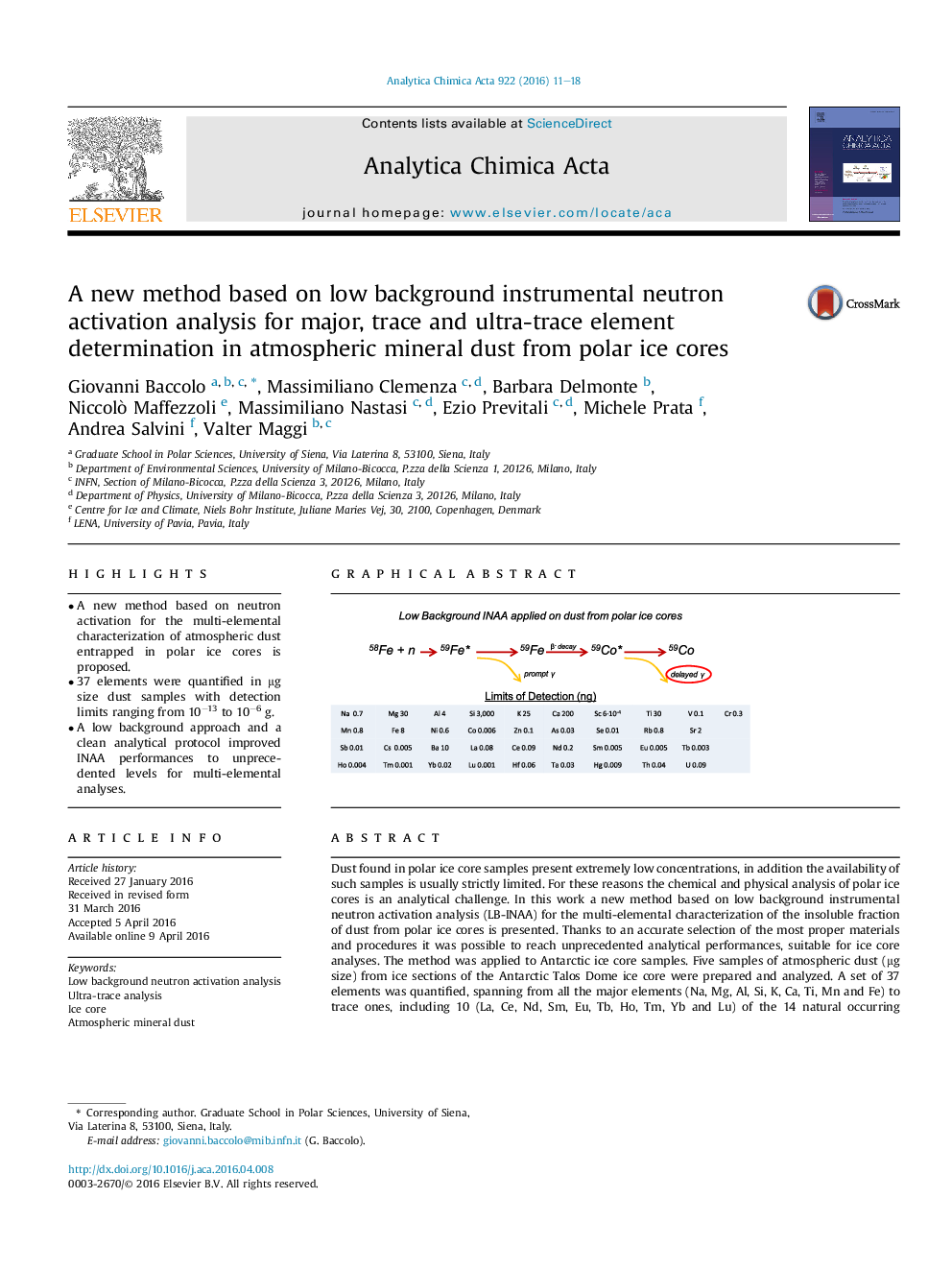| Article ID | Journal | Published Year | Pages | File Type |
|---|---|---|---|---|
| 1162994 | Analytica Chimica Acta | 2016 | 8 Pages |
•A new method based on neutron activation for the multi-elemental characterization of atmospheric dust entrapped in polar ice cores is proposed.•37 elements were quantified in μg size dust samples with detection limits ranging from 10−13 to 10−6 g.•A low background approach and a clean analytical protocol improved INAA performances to unprecedented levels for multi-elemental analyses.
Dust found in polar ice core samples present extremely low concentrations, in addition the availability of such samples is usually strictly limited. For these reasons the chemical and physical analysis of polar ice cores is an analytical challenge. In this work a new method based on low background instrumental neutron activation analysis (LB-INAA) for the multi-elemental characterization of the insoluble fraction of dust from polar ice cores is presented. Thanks to an accurate selection of the most proper materials and procedures it was possible to reach unprecedented analytical performances, suitable for ice core analyses. The method was applied to Antarctic ice core samples. Five samples of atmospheric dust (μg size) from ice sections of the Antarctic Talos Dome ice core were prepared and analyzed. A set of 37 elements was quantified, spanning from all the major elements (Na, Mg, Al, Si, K, Ca, Ti, Mn and Fe) to trace ones, including 10 (La, Ce, Nd, Sm, Eu, Tb, Ho, Tm, Yb and Lu) of the 14 natural occurring lanthanides. The detection limits are in the range of 10−13–10−6 g, improving previous results of 1–3 orders of magnitude depending on the element; uncertainties lies between 4% and 60%.
Graphical abstractFigure optionsDownload full-size imageDownload as PowerPoint slide
